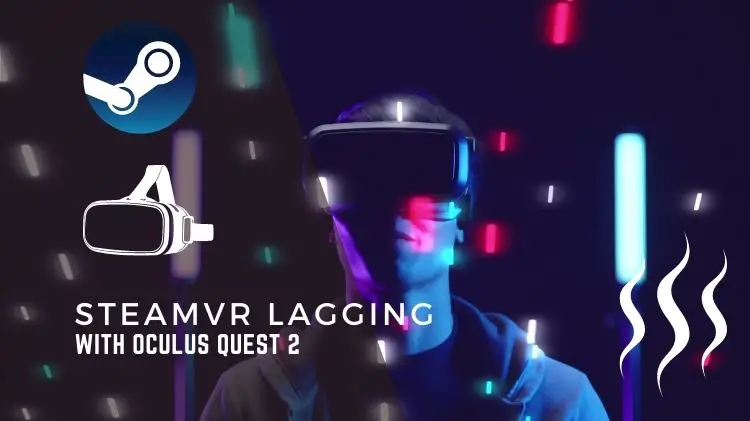
We’ve researched and tested all of the latest games to determine which ones will work seamlessly on Oculus Quest 2. Here are a few we recommend.
You can now play these awesome games on both platforms without experiencing lag or choppiness. No more performance issues when playing virtual reality games! Just pick up one of our recommended titles and get started!
How to Setup
As a first point to keep in mind, Oculus Quest 2 is not a sequel to Oculus Quest; it’s a brand new game. To enjoy this new game, you need to grasp different mechanics.
As for SteamVR Lagging with Oculus Quest 2, it’s not going to be a popular game. However, since it’s new and out of the box, it’s likely to be popular.
SteamVR Lagging With Oculus Quest 2 will be extremely expensive because of the 3D accelerator that Oculus Quest 2 uses.
The last thing to consider is that Oculus Quest 2 will be a huge success. It will be very popular.
Why SteamVR Lags on Oculus Quest?
The CPU and GPU cannot handle VR games due to Steam VR lag. This is especially true for Steam users with high resolutions and high graphics settings. Steam has a setting called “Enable Frame Pacing” which can further increase CPU and GPU load. Oculus Quest does not have this option, so SteamVR lag is more common.
It is known that SteamVR can cause problems with other virtual reality headsets, including the Oculus Quest.
Steam recommends using a GTX 1070 or above for optimal VR gaming performance.
SteamVR lags when using Oculus Quest?
Oculus Quest is one of the most affected devices by SteamVR lagging. SteamVR is weakened by a combination of factors, including frame pacing (this setting enables Steam to use its frame rate limiting method), CPU usage, GPU usage, and resolution. This guide will show users how to reduce SteamVR lagging on the Oculus Quest by changing some Steam and Oculus settings.
Set SteamVR to “60 FPS” or below under “Frame Rate Limiter.” SteamVR lags are caused by Steam not limiting its framerate. SteamVR lags are caused by Steam not limiting its framerate when using SteamVR. SteamVR lags are caused by Steam not limiting its framerate when using SteamVR, so users should set Steam’s frame rate limiter at 60FPS for most people.
Users can change this in Steam by going to the “In-game” tab and changing the “Frame Rate Limiter” to 120 frames per second. If you change this setting to “Fixed Limit of 120 FPS”, SteamVR will use more of your computer’s hardware, resulting in minor SteamVR lag on your Oculus Quest.
Is steamVR lagging on Oculus Quest?
There are a few things users can do to help fix SteamVR lagging on Oculus Quest:
- Actually, take a look at PC Specifications
- Restart PC/Headset/Router
- Reset Everything to Default Values
- Measure Performance
- Test With the Lowest Settings
- Raise Priority of VR Processes (Task Manager)
- Stop Unnecessary Processes
- Debilitate GeForce Experience Overlay
- Update Graphics/Windows drivers
- Reinstall Oculus Software/SteamVR/Virtual Desktop
- Attempt Alternative PC VR techniques
Conclusion
Since using SteamVR for a few years, I’ve been frustrated by how long it takes to run a game. It’s frustrating because I want to play my favorite games, and I can’t because my game is lagging. I wanted to share how I discovered the new Oculus Quest 2 game development tool because it’s like they’ve lost their way.
We have reviewed the leading causes of lag and how to fix them and provided some general troubleshooting tips for other issues causing VR problems. These simple guidelines should help users quickly get back into virtual reality, whether they’re new or need a refresher on the basics.

